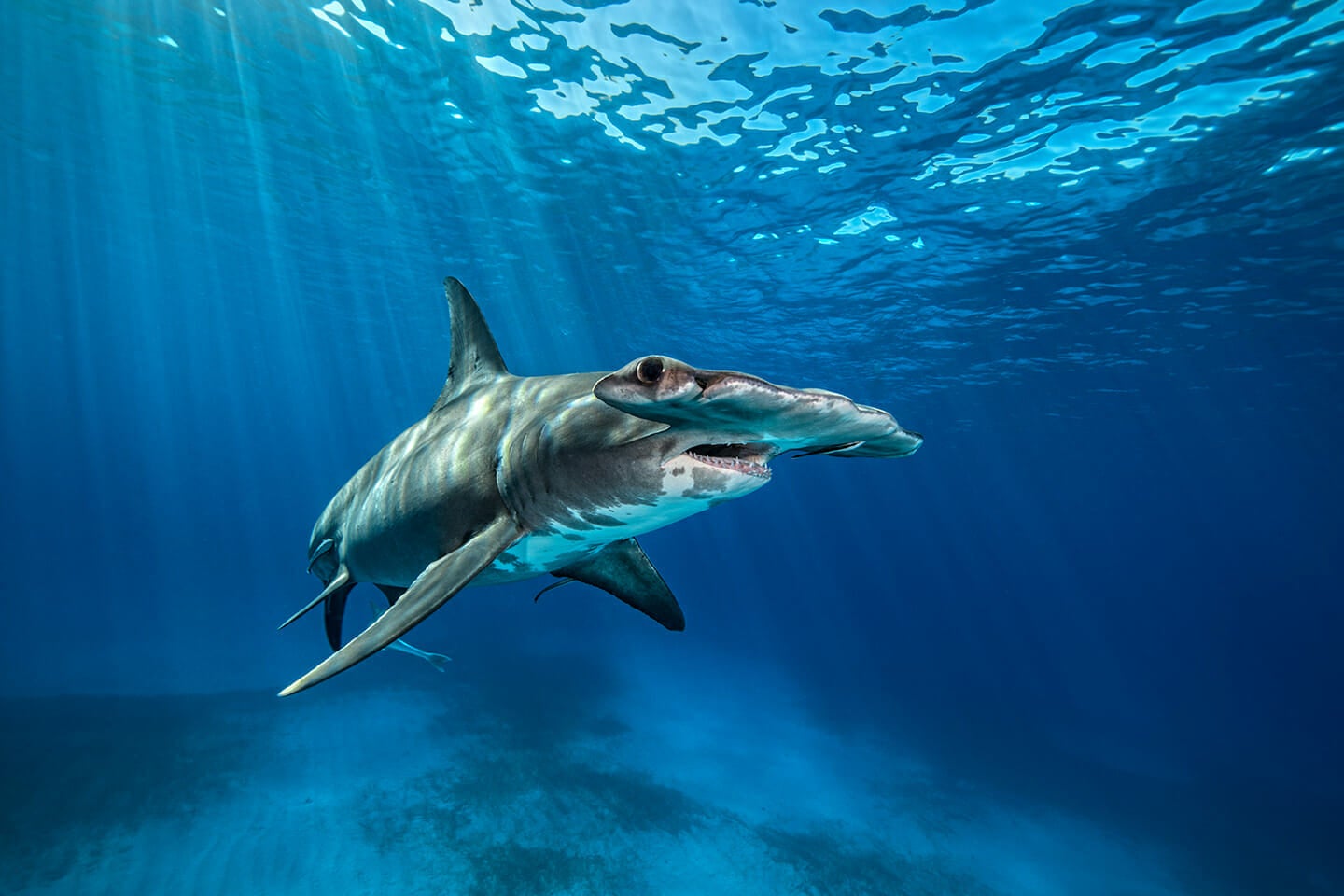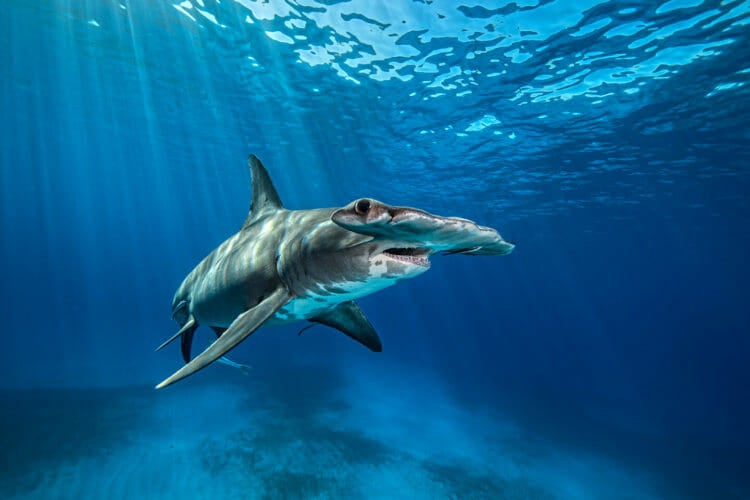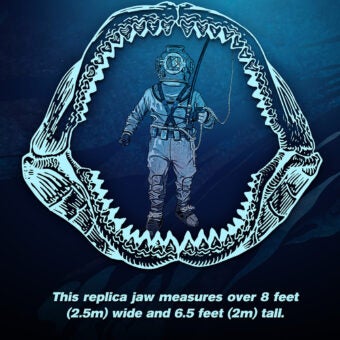-
Size
Common length 12-18 feet (3.6-5.5 m) -
Diet
Rays and skates -
Range
Most commonly found in shallow water -
Habitat
Warm temperate and tropical seas worldwide
Physical Characteristics
- Largest species of hammerhead shark, with the most distinctly hammer-shaped head of this genus.
- Coloration is dark grey-brown dorsally and lighter grey ventrally.
- The body is broad and streamlined in shape with tall, curved dorsal fins, and a large, well-developed tail with distinct lobes.
- The front of the head is nearly straight across and greatly elongated laterally with flattened lobes. Eyes and nostrils are located on the ends of the lobes.
- Juvenile shark has a more curved hammer.
- As in many shark species, the female is larger than the male.
- The common length for adult females is 15-18 feet (4.6-5.5 m); the common length for adult males is about 12 feet (3.6 m).
- Common length at birth is about 1.6-2.3 feet (50-70 cm).
- Maximum length recorded was 20 feet (6.1 m).
- Maximum weight recorded was 991 pounds (449.5 kg).
Diet / Feeding
- Diet consists primarily of stingrays, other rays and skates.
- May also consume other sharks, including other hammerhead sharks, bony fish, including groupers and sea catfish, squid and bottom dwelling crustaceans.
- Commonly feeds by pinning prey down with hammer and biting pieces off.
- Feeding primarily occurs at dusk.
- Although stingrays appear to be a preferred prey, this species does not seem to be harmed by the venomous barbs. One shark was found with up to fifty broken stingray or catfish spines stuck in the jaws, throat and sides of the head.
Range / Habitat
- Occurs in warm temperate and tropical seas worldwide.
- Highly migratory species. May be found in both inshore and offshore waters. Typically found over the continental shelf, near islands and reefs, and in lagoons.
- Most commonly found in shallow water at depths to 328 feet (100 m) but may occasionally be found at depths to 984 feet (300 m).
Reproduction & Growth
- Viviparous species meaning the young is born live.
- Common litter size of 13-42 pups.
- Gestation period is about eleven months. Reproduces once every two years.
- Births usually occur in late spring and summer
Sources
www.fishbase.org
www.iucnredlist.org
www.arkive.org
www.floridamuseum.ufl.edu
Grzimek’s Animal Life Encyclopedia. Thoney, D. A. and Loiselle, P. V.
Sharks and Rays of Australia. Last and Stevens







